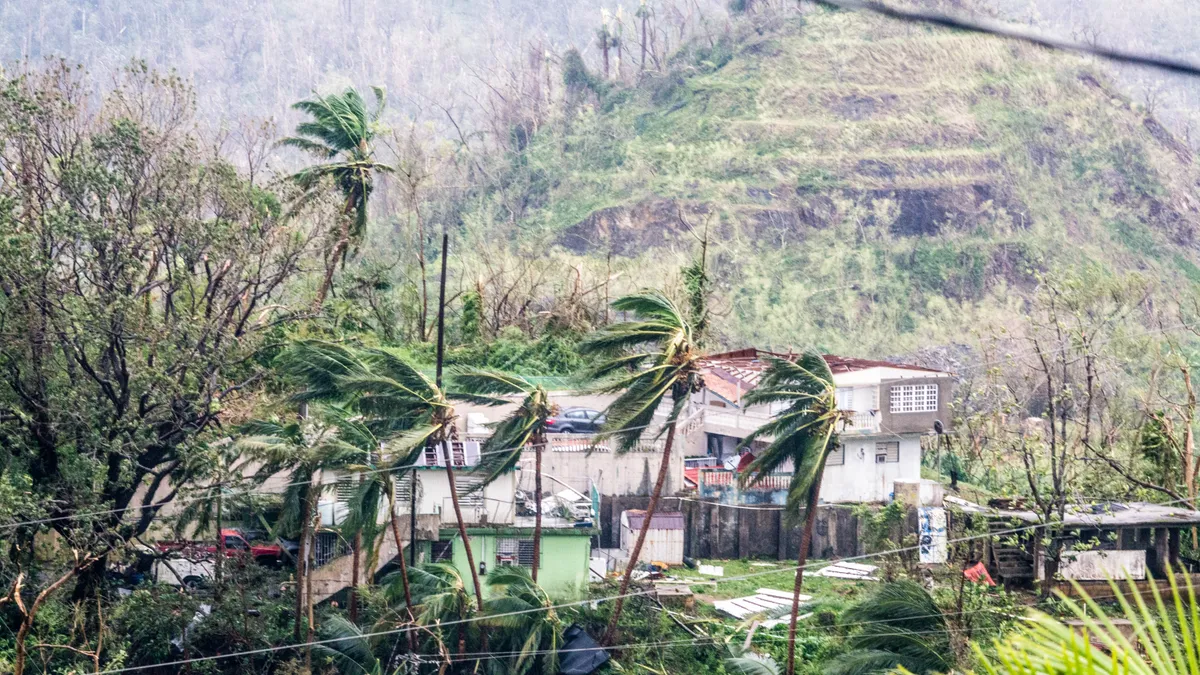Dive Brief:
-
Alternative Transmission Inc. is developing a $5.5 billion to $6 billion undersea transmission project between the mainland United States and Puerto Rico to bring lower cost, reliable power to the island, Adam Rousselle, ATI president, said Tuesday.
-
The project, called Project Equity, could deliver 2.1 GW from up to two points on the East Coast to up to two locations on Puerto Rico, an island beset by power outages caused by hurricanes and earthquakes, Rousselle said.
-
ATI intends to deliver power that would evolve towards being entirely renewable while reducing the effects of natural disasters on Puerto Rico’s power system. “In one fell swoop, we move the transmission undersea. We take it out of the hurricane’s wrath, and we move the generation off island,” Rousselle said.
Dive Insight:
In a step towards advancing its project, ATI on Friday asked the Federal Energy Regulatory Commission to declare that the proposed 1,500-mile Project Equity wouldn’t place Puerto Rico’s grid under the agency’s jurisdiction.
“Project Equity is not only necessary to improve the quality of life for Puerto Rican residents, but it will also deliver durable quality electrical power to the island at considerably lower costs,” the Sullivans Island, South Carolina-based company said in the filing.
Puerto Rico’s grid is vulnerable to catastrophic storms and natural disasters that are expected to get worse, ATI said in its petition for a declaratory order.
In 2017, Hurricane Maria knocked out power to all of Puerto Rico, a U.S. territory where about 3.2 million people live. It took 11 months to restore power to the entire island, which has a peak demand of about 2,870 MW. Earthquakes caused major outages in 2020 and earlier this year Hurricane Fiona left more than 1 million customers without electricity.
Those disasters, however, damaged Puerto Rico’s transmission and distribution system, a problem that wouldn’t be solved by ATI’s proposal, according to Cathy Kunkel, energy program manager for CAMBIO PR, a non-profit group in Puerto Rico.
“The major reliability problem in Puerto Rico is on the transmission and distribution side and this is not going to help you on that,” Kunkel said. “The real solution for reliability in Puerto Rico is rooftop solar and storage, putting the generation closer to where it's consumed, rather than trying to inject generation from [the mainland.]”
ATI expects its project would provide major benefits to the island.
“Project Equity will provide the American citizens of Puerto Rico with long awaited access to reliable, resilient and low-cost electricity,” ATI said.
Residential electricity in Puerto Rico cost 30 cents/kWh in August compared with about 16 cents/kWh for the United States on average, according to the Energy Information Administration. Commercial and industrial power cost 33 cents/kWh and 30.5 cents/kWh, respectively, compared with 13.5 cents/kWh and 9.7 cents/kWh on average in the U.S.
Under ATI’s plan, at least one high-voltage direct-current cable would run from a DC substation on the Atlantic coast of the United States to a DC substation on Puerto Rico, according to the filing at FERC.
ATI could own at least some of the generation that would be delivered by the Project Equity transmission facilities, according to the filing.
FERC regulates interstate electricity sales, but the agency has consistently ruled that ordering interconnection and transmission service under the Federal Power Act’s sections 210 and 211 does not affect existing jurisdictional boundaries, ATI said.
FERC, for example, said in 2011 that Pattern Energy’s proposed 3,000-MW Southern Cross HVDC transmission line between the Electric Reliability Council of Texas and the SERC Reliability Corp. region wouldn’t draw Texas utilities into the commission’s jurisdiction, according to ATI.
ATI asked FERC to adopt a fast-track review of the request, with comments due in 15 days and a decision within 60 days.
“Developing and building a project of such enormous scale and scope requires extensive amounts of time and resources, as well as prodigious levels of coordination among numerous regulatory bodies, stakeholders, and market participants,” ATI said.
Prompt action by FERC will provide regulatory certainty, which will help expedite ATI’s development and financing of Project Equity, the company said.
ATI has been in talks with governmental agencies, engineering firms, transmission cable manufacturers and financial institutions about the project, according to Rousselle.
Natural gas-fired power plants made 44% of Puerto Rico’s electricity in fiscal year 2021, followed by petroleum at 37%, coal at 17% and renewables at 3%, according to the EIA.
Puerto Rico is required to get 40% of its electricity from renewable resources by 2025, 60% by 2040 and 100% by 2050 under the Puerto Rico Energy Public Policy Act.
In an earlier innovative project, ATI in 2019 asked FERC to declare that transporting stored energy by rail is an alternative transmission service and would fall under the agency’s jurisdiction. The company envisioned charging flow batteries at a charging station and then transporting them to another state that needed electricity where they would be discharged. FERC dismissed the request for a declaratory order, saying it was too hypothetical.















